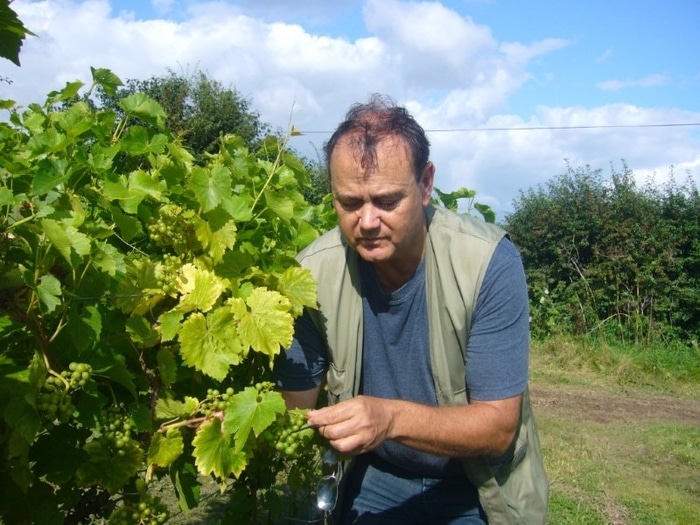Make a plan for controlling diseases – Vineyard – Rob Saunders, Chris Cooper
Mancozeb has been a cornerstone of Downy Mildew and Phomopsis control in vineyards, but growers will have to look to other options this season ...
There has been some speculation about the availability of products containing mancozeb after the EU failed to pass the recommended withdrawal into law by the end of the Brexit transition period. The revocation at EU level came after 31 December so theoretically the UK authorities can then grant an automatic three-year extension to its approval.
However, manufacturers had already stopped making mancozeb based products for the UK market prior to this and, at the time of writing at least, it remains to be seen whether the approval extension will remain in place within the UK – a decision that is in the hands of the UK regulator.

Rob Saunders
With only very limited supplies of mancozeb-based products in the marketplace this season, growers should therefore plan for alternative strategies to control diseases such as Phomopsis and Downy Mildew.
Both are generally wet weather diseases, although while Downy Mildew mostly favours wet and warm conditions, Phomopsis tends to be a bigger threat in damp, cooler conditions between bud break and flowering. Both must be tackled early to avoid disease getting a foothold on the plant and thereby compromising the canopy’s photosynthetic capacity through the season.

Chris Cooper
Keep a lid on Phomopsis
Up to now Phomopsis has been a less significant problem in the UK, although that may have been a consequence of many spray programmes incorporating mancozeb, so losing this important active could open the door to more prevalence of this disease in the future if growers are not careful.
Mancozeb was one of just two active ingredients currently approved for Phomopsis control in grape vines, the other being kresoxim-methyl.
But last year saw a new addition to the armoury in the form of a milled sulphur product called Thiopron, formulated with a unique wetter/sticker. The product performed well in trials in Italy and also offers some efficacy against Rust Mite, Grape Leaf Blister Mite and Powdery Mildew.
Grape Leaf Blister Mite is regularly seen and low infestation rates are tolerable, but if left unchecked it will stunt extension growth and flower development early in the season. It favours periods of hot, dry weather, such as many regions experienced last spring, but experience shows it is relatively easy to control with a good sulphur programme.
Downy Mildew options
While the loss of mancozeb is a blow to Downy Mildew control, especially in more susceptible varieties like Chardonnay, there are several options available for controlling this disease, including, cymoxanil, amisulbrom, and ametoctradin + dimethomorph.
Fytosave is a new biofungicide option to consider for Downy and Powdery Mildew control, available for the first time last season.
The product is an elicitor material that works by stimulating the plant’s natural systemic defences, and if used ahead of infection, it can make vines more resilient to disease attack. Options such as this are purely a protectant strategy though and will not be effective if applied after disease has already established.
Cultural controls should of course remain central to any integrated disease control programme and effective canopy management is a key part of this. For foliar diseases, growers must strike a careful balance between maintaining sufficient canopy to optimise light interception and build yield potential, without compromising airflow and increasing disease risk. Dense canopies with poor airflow, dampness and high humidity, provide ideal conditions for many diseases to develop and spread.
Another important cultural step is to optimise nutrition throughout the growing season to maximise plant health and make vines more resilient to pest and disease attack. Research has shown foliar nutrition products such as Zynergy (containing copper, zinc and sulphur) and phosphites such as Phorce can trigger the vines natural defence mechanism markedly reducing Downy Mildew infection.